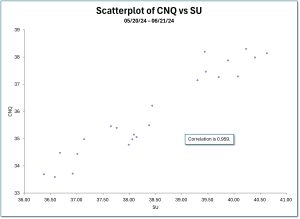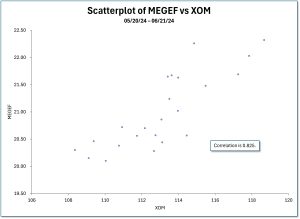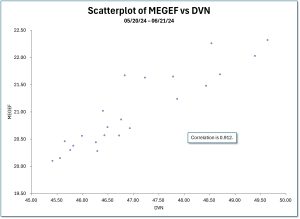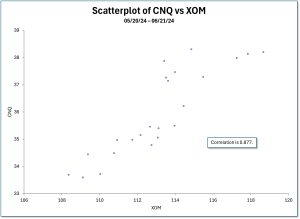My expectation for October’s West Texas Intermediate (WTI) oil prices has changed. For October, I expect that WTI should range from $65 to $85 per barrel. A narrower range is from $67.50 to $77.50 per barrel. The wider range has shifted downward by $5 per barrel. And the narrower range has also shifted down.
This past month’s movements in oil prices seemed rather severe. Only a few weeks ago, some were talking about Brent oil prices, which are typically three or four dollars per barrel greater than WTI’s prices, possibly hitting a hundred dollars per barrel by late summer. Now, many are hoping that oil prices do not crash.
While there are concerns about the global economy and additional non-OPEC production for 2025, it is not as dire as many would have you believe. Some have become overly bearish and point to negative news articles, like the September 26 Financial Times article “Saudi Arabia ready to abandon $100 crude target to take back market share” (subscription required).
Saudi Arabia is ready to abandon its unofficial price target of $100 a barrel for crude as it prepares to increase output, in a sign that the kingdom is resigned to a period of lower oil prices, according to people familiar with the country’s thinking.
The world’s largest oil exporter and seven other members of the Opec+ producer group had been due to unwind long-standing production cuts from the start of October. But a two-month delay sparked speculation over whether the group would ever be able to raise output, with the price of Brent crude, the international benchmark, briefly dropping below $70 this month to its lowest since December 2021.
However, officials in the kingdom are committed to bringing back that production as planned on December 1, even if it leads to a prolonged period of lower prices, the people said.
Oil prices gyrated lower after this article was published.
Saudi Arabia and OPEC+ do not have target oil prices. Instead, they target supply demand balances. Now, some might believe that is just semantics. No, it is different. To attempt to have oil prices at $100 or higher would require heroic efforts. And it would be self-defeating because it would encourage non-economic production into production to reverse oil prices.
Instead, OPEC+ wants to keep a buffer capacity to meet unexpected challenges and allow supply and demand to find its proper level. If OPEC+ took a hands off-hands approach, OPEC+ production and exports would increase, oil price would fall, and higher cost producers would go out of business. Then when the world economy gathered some steam, there would be no buffer capacity to meet the additional demand. Prices would spike much higher than wanted or desired until others came to the rescue by starting or increasing their production. In short, prices would be much more volatile.
Amrita Sen from Energy Aspects provided a rebuttal to the Financial Times article.
This is a MUST watch 5 minute interview by @ea_amrita who calmly and clearly outlines why there is no reason for panic and why the market is misinterpreting OPEC+'s intention to gradually return barrels in December (market dependent). There is NO market share battle coming IMO. pic.twitter.com/St5D8xsQOm
— Eric Nuttall (@ericnuttall) September 27, 2024
Wrapping up, I expect oil prices to remain volatile as investors assess the US election and potential policies, geopolitical uncertainties in the Middle East and in Ukraine, and the health of the global economy. When WTI goes below $70, it seems too bearish.





Recent Comments